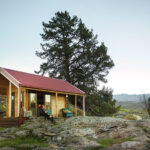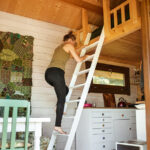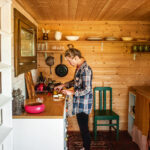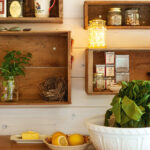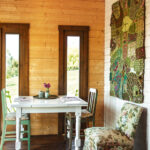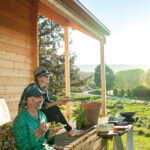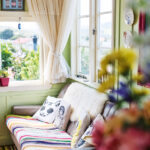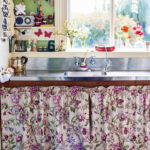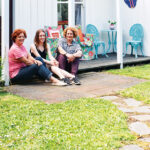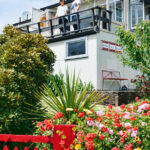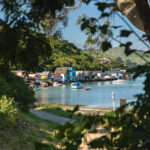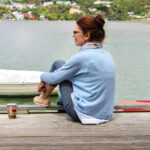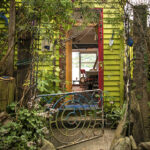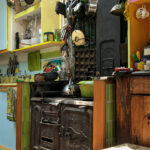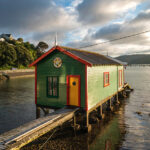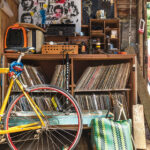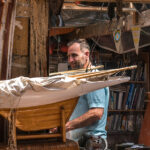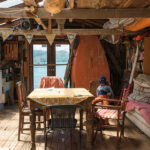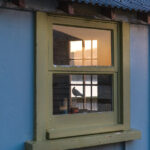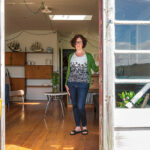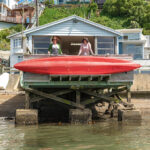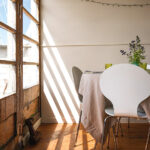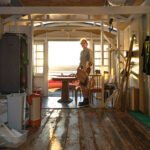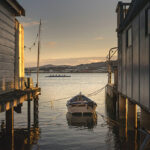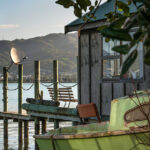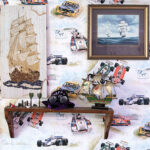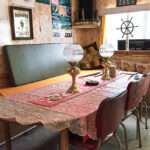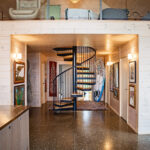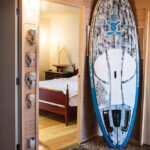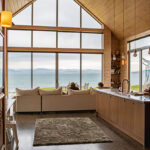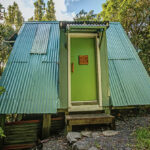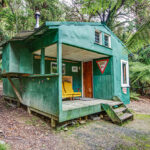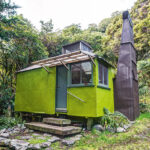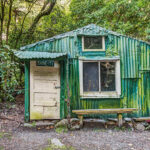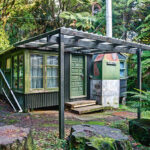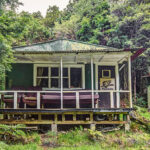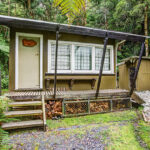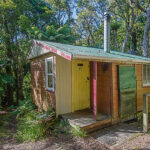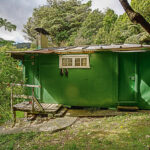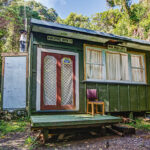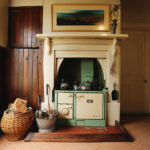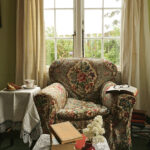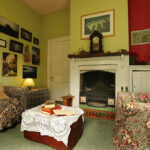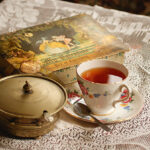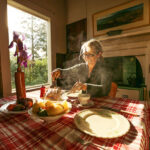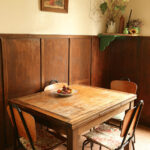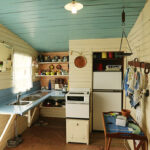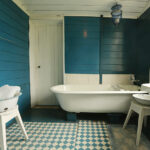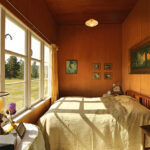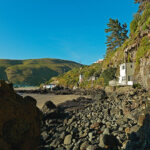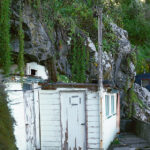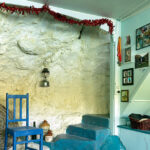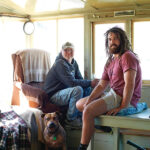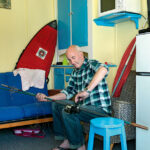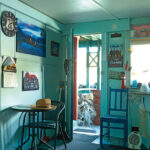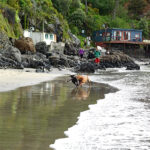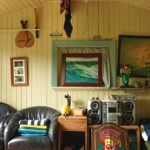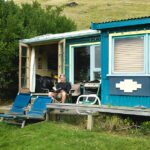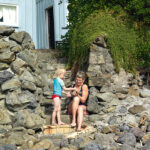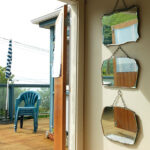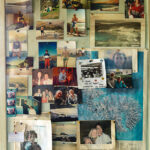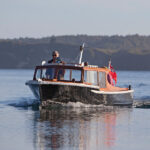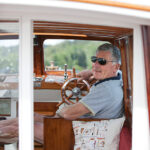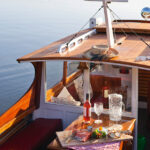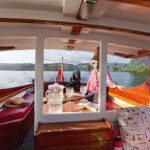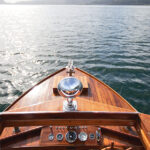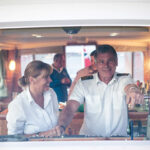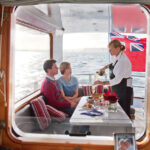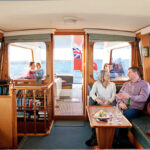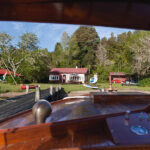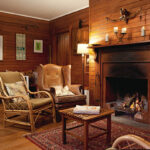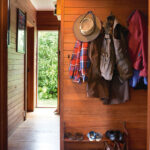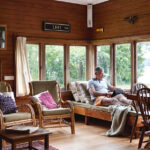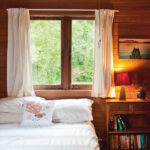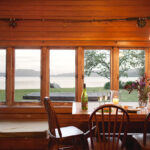Bach from the past: Timeless holiday homes, huts, baches and boats around New Zealand
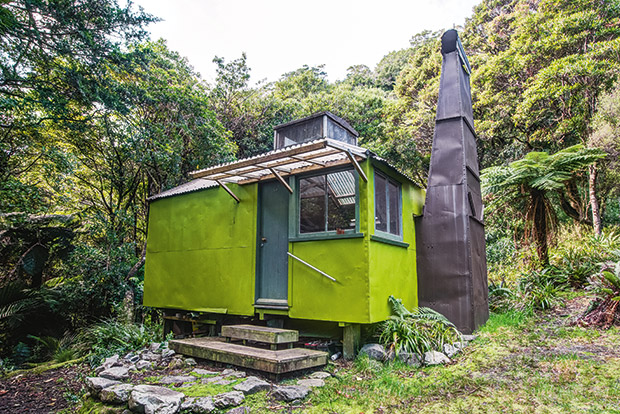
An oh-so-glorious collection of timeless baches and holiday getaways to celebrate the best of summer in New Zealand.
Every summer, NZ Life & Leisure casts a wide net to find colourful and quirky baches from throughout Aotearoa. As a bunch of inveterate holidaymakers themselves, this is the team’s favourite assignment of the year. See the treasures they found to feature in the magazine: a sibling-owned getaway in Raglan, a patchwork collection of baches at Taylors Mistake near Christchurch, huts in the Orongorongos, cabins in the hills behind Alexandra plus boats and boatsheds from the coast of the capital. Welcome to these oh-so-glorious timeless baches.
1. A tiny eco-cabin in Central Otago
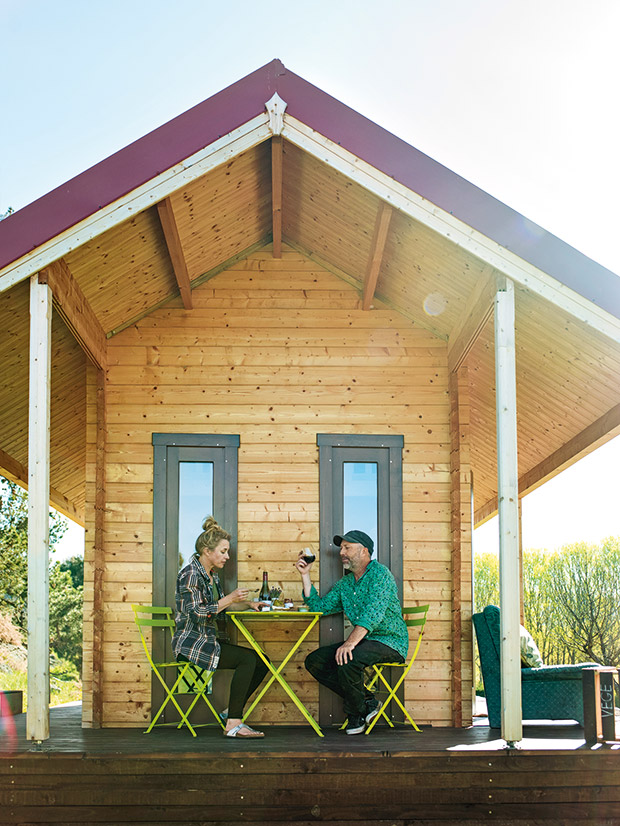
Originally published in the Jan/Feb 2019 issue of NZ Life & Leisure. Full story online here.
At only 10 square metres, Jeff and Jane Avery’s Eurowood cabin, imported via Christchurch from the Czech Republic for $30,000, seems more set up for summer than the Central Otago winter. Still, it’s insulated, powered by solar energy, and takes nothing to heat. The cabin’s size means no building consent was necessary, the 33-degree angle of the roof creates a sleeping loft inside, with deep eaves shading an equal amount of outdoor space around the cabin.
Jeff and Jane (the designer behind Dunedin label, Lapin) mostly put the kitset cabin together themselves — the roof tested the bounds of their marriage — aided by friends carefully selected for their skills, particularly Jeff’s ice hockey mates (he’s also the coach of Dunedin Thunder).
“We chose this one because it’s do-able. You could build it in three days if you knew what you were doing. It’s like Lego; once you’ve done the foundations, you put the baseboards down and it just slots together, with big steel pins in the corners,” Jeff says.
- While Jane and Jeff Avery live and work in Dunedin, the fashion designer and television editor take the 2.5-hour drive to their hectare of Central Otago heaven as much as possible.
- Vertical storage is crucial in a small space — for plates, pots, and even sleeping, as Jane and Jeff sleep in an alcove created by the pitched roof.
- The couple plans to build a kitchen just off the cabin, but for now food is prepped on an old bench donated by a friend’s mother that’s been whitewashed back to life. Jane was delighted to have an excuse to splurge on the colourful handles she’s admired in various gift shops over the years.
The entire building — bar the roofing but including the ceiling — arrived in three flat packs.
“Then you open it up and go, ‘What on earth do I do now?’” says Jeff. “They come with a general plan but it’s written by people with English as a second language. and yet even if it were written in proper English, I would have messed some things up. But by not getting overwhelmed, and doing one thing after another, it started to materialize.”
Words: Lee-Anne Duncan Photos: Rachael McKenna
2. A sibling-owned bach in Raglan
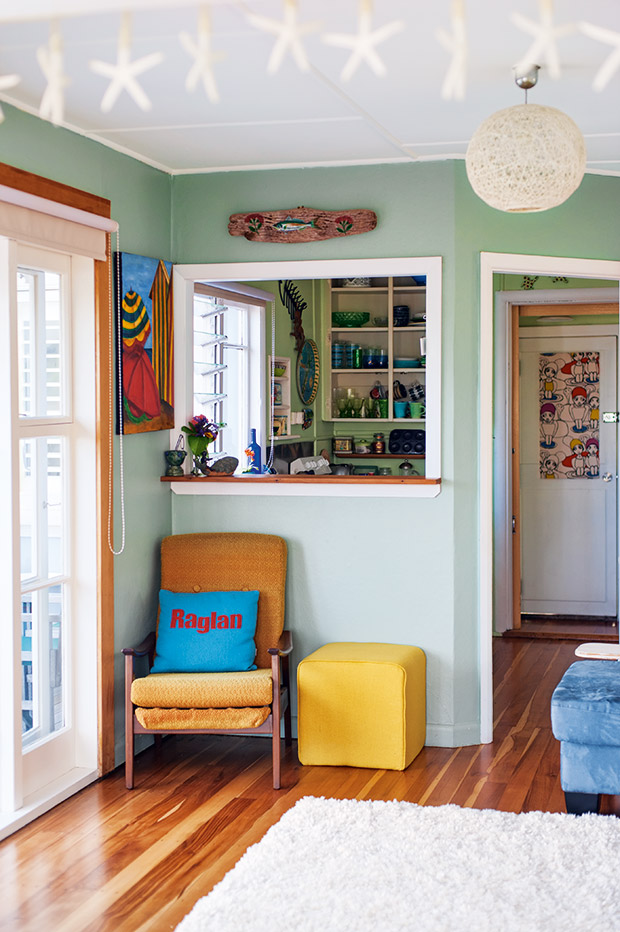
Originally published in the Jan/Feb 2016 issue of NZ Life & Leisure.
In the minds and certainly in the hearts of Joanne, Leanne, Cheryl and Dale Perry it is always sunny in the coastal town of Raglan where they grew up as four of a posse of seven and to which they return at every opportunity. Back then it was an even smaller town but they had big lives.
They grew up and set off on life’s grand adventure but when they least expected it they would still find Raglan sand in their shoes, smell the ocean in their hair. It felt real to them but was mostly imaginary, unlike the For Sale sign that appeared one day outside a century-old fisherman’s cottage next door to where their father had worked.
That was very real and for Joanne and Leanne it was what they had been waiting for. They went halves, as twins are wont to do, and all too soon and at the same time not soon enough, they had the key not only to the cottage but to both their past and future.
Leanne, now Mrs Perry-Meyer, took full advantage of husband Louis’ carpentry skills, bringing the 100-year-old dwelling and its 60-year-old add-ons up to scratch. It was not without its small domestic dramas as Louis is a precise and meticulous renovator whereas his wife is a give-me-a-pot-of-paint-and-I’ll-give-you-a-new-house-in-a-day kind of gal.
Words: Jane Warwick Photos: Karin Van Til
3. A boatload of colourful sheds in the Wellington area

Originally published in the Jan/Feb 2018 issue of NZ Life & Leisure.
These Wellington boat sheds – some of them important local landmarks – mean many things to many people. On the Camborne Walkway, Porirua, a collection of 36 boat sheds, dating from the late 1940s and 1950s and built in a mishmash of styles is a well-kept local secret. They’re tucked below the hilltop on the northwest side of the Pauatahanui Inlet along Porirua’s Camborne Walkway.
The boat sheds at Evans Bay are a much-loved part of the capital’s landscape and have been for almost 90 years. The striking green and red Havana Cruising Club shed, owned by Havana Coffee managing director Geoff Marsland, is a local icon. “I would go as far to say it is the most photographed building in Wellington,” says his boat shed neighbour, Jim Scott.
- Camborne Walkway is nestled alongside Porirua’s Pauatahanui Inlet.
- Terrie Huege De Serville’s shed is her sanctuary, full of special objects.
- The bright boat shed is a welcoming space for three generations of Terrie’s family and friends.
- The Shacklock cast-iron cooker sits staunchly in Terrie’s compact galley kitchen.
- The colourful Havana Cruising Club shed is an Instagram-worthy tourist attraction at Evans Bay.
- Jim Scott’s Evans Bay “office” is a bike ride away from his home.
- Jim Scott in his boat shed. He initially worked out of his neighbour Geoff Marsland’s landmark green and red Havana shed next door when producing his 2010 documentary, Sam Hunt: Purple Balloon, with film-maker and Havana Coffee Works co-founder Tim Rose.
- Jim’s own shed floods in a king tide.
- A neighbour’s window; likely built in the 1930s.
- Sue Dempsey loves her Evans Bay shed’s “million dollar” view;
- Sue and business partner Janice Kirkwood do their “fun work” at the shed, like planning gourmet tours to Toyko.
- The building’s glass doors were once windows in a 1920s primary school.
- Model-maker Bill Thomson in his shed.
- The Onepoto Road sheds are one of two boat shed communities at Titahi Bay.
- Former seaman gunner Wayne Davies at ease.
- Wayne has spotted massive stingrays while filleting fish off his jetty.
- His shed is full of nautical mementos
- The helm in the window is from a naval rearming barge of which he was once coxswain.
Step across the shiny brass threshold of Wayne Davies’ boat shed on Onepoto Road, on the Porirua Harbour, and enter a cave of treasures telling of a life at sea. Wayne, 64, was a seaman gunner for the Royal New Zealand Navy for 20 years and worked on freighters and interisland ferries.A blackened sugar bowl recovered from the wreck of the Wahine sits on the bar. Other marine memorabilia includes lifebuoys from the GMV Aranui and MS Santa Regina and two bunks from the HMNZS Otago. “Everything means something to me.”
Words: Rachel Helyer Donaldson Photos: Tom Collier
4. A holiday home on the Catlins coast
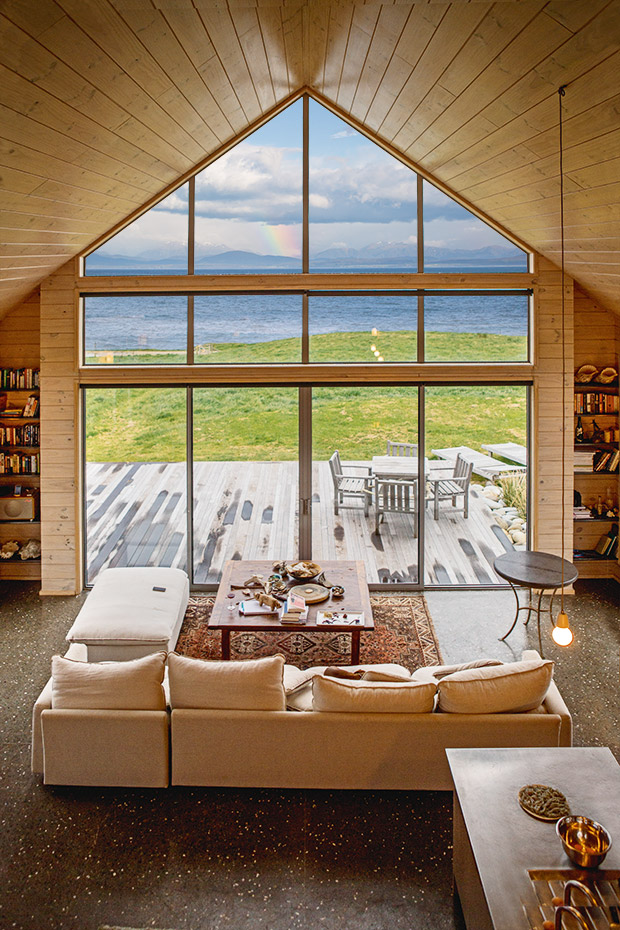
Originally published in the Jan/Feb 2014 issue of NZ Life & Leisure.
Arrowtown sculpture artist Mark Hill and wife Monika like to relax (if that’s the right word for what they get up to) on the South Island’s nethermost coast. Mark’s an outdoorsy type and the wind and the waves down there are of the strong and exciting variety – just the right sort for a man with a passion for windsurfing, surfing and paddle boarding – and his love of the wind has been translated into more solid form in the sculptures for which he’s become well known.
The stretch of coast from the Catlins to the start of the Hump Ridge Track is easily accessible but tourists from other countries know and enjoy it much better than most New Zealanders. The beaches are wild and deserted and dream destinations for beachcombers who hunt for ambergris and gold and all sorts of treasures from the sea. The Hills are part of a small but smart group who find this part of New Zealand thrilling. The functional barn they have built here works ideally as a beach house. It’s easy to look after and even easier to look out of – straight out over the sea where the weather provides endless entertainment.
Words: Miranda Spary Photos: Camilla Stoddard
5. These remote huts in the Orongorongo Valley, near Wellington
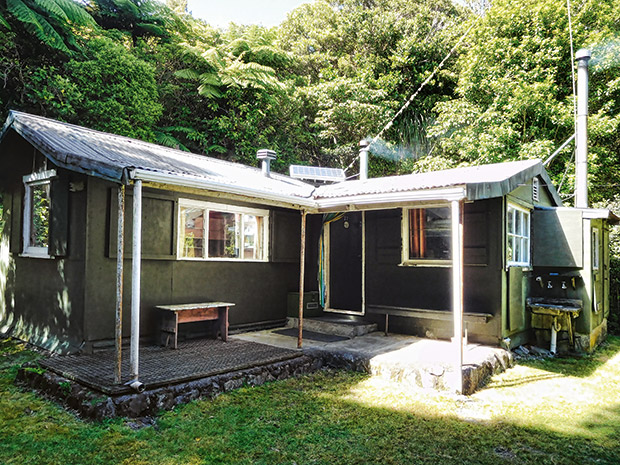
Rebecca’s family hut, Tahora.
Originally published in the Jan/Feb 2018 issue of NZ Life & Leisure.
Fifty private huts, hidden in native bush in the Orongorongo Valley near Wellington, have played an important role for generations of families. For writer Rebecca Jamieson, whose father (and friends) built her family hut in 1971, these rambshackle huts are like a long-lost friend.
Rebecca writes: “Dad was an apprentice carpenter, but during his study time he pulled nails out of Ford car-packing cases from which he could build a hut. The hut was pre-built in my grandparents’ backyard, then driven into the valley tied to a friend’s homemade buggy. Dad and his mates had cleared the hut site with axes and slashes before carrying bundles of dismantled pieces up the hill 300 metres to the building site.
“Rules were relaxed back then; an application to the Wellington Water Board for a licence to build a hut was all that was required. By 1970 there were already 60 huts in the valley, some dating back to the 1920s and 1930s. Early huts were constructed from whatever materials were at hand. Manuka poles for framing; flattened kerosene tins for cladding. Bags of concrete and rolls of malthoid were carried in from Eastbourne – a four-hour tramp.”
Tahora’s look and form has changed over the years – adapting to our growing family. It once was a bachelor pad where flagons were emptied and tall tales told. Today it is a comfortable family retreat where treasured childhood memories are still being created.”
Photos: Allan Sheppard and Rebecca Jamieson
6. A wee holiday cottage in Hakataramea Valley
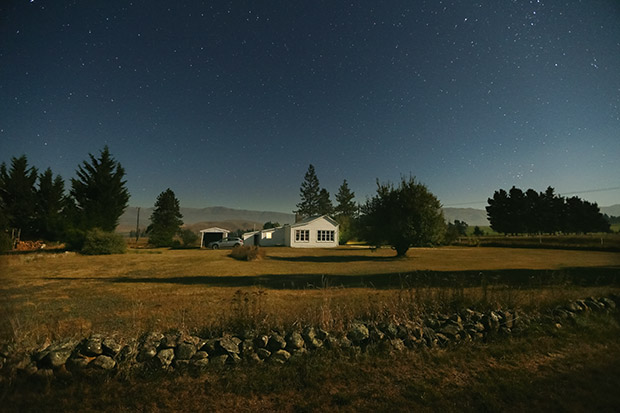
Originally published in the March/April 2015 issue of NZ Life & Leisure.
Jan and Brian High’s weathered holiday cottage crouches at the top of a terrace in the paper-bag brown Hakataramea Valley. It’s January, more than 30°C and the dry air is utterly still. From the plateau at the top of a rise within 10 minutes’ walk of the Hakataramea River the view is of tawny hills embroidered with a swooping chain of bright green willows that edge the river. Beyond these, a private plantation of tall, dark green pines.
In the distance there are mountains: the Hunter Hills to the east and the Kirkliston Range to the west. Three red and white striped canvas deck-chairs are arranged in the shade of a spreading plum tree in the middle of the crunchy brown lawn. There are three white wooden stools on which to rest the antipasto plates and Jan High is dashing cold Pasquale Hakataramea Valley pinot gris into mismatched crystal port glasses.
“It takes a bit of adjusting to how quiet it is in this place and you don’t notice the relative silence until you become aware of the few sounds that are here,” she says. “And they’re not necessarily melodious or comforting. There’s the magpies with those quardle oodle ardle wardle doodle songs that are so loud. And the blue herons nesting in the big pine trees have a call like a strangulated sheep: yeeerrp, they go. Yeeerp! You can even hear the wind whistling through their wings when they fly overhead. They’re all sounds you’d never be aware of in town.”
The High life in Timaru can be stressful. Jan’s a pharmacist and Brian’s work as a freelance photographer and cameraman often calls him away from home at a moment’s notice to gather footage for television news. Early in January he and Jan had retreated to the cottage but he had to rush away to film a rescue attempt on Aoraki Mount Cook and then he was hanging out of a helicopter filming big fires around Twizel.
They don’t have many friends in the valley even after 30 years because they’re here so sporadically. “But the locals are always very friendly and the neighbouring farmers, Robert Hay and his son Graham, cut the grass and keep an eye on the place when we’re not there,” says Brian. “Whenever we make the time to get away up the Haka we don’t come to socialize. We’re usually here only for two or three days at a time and we like to put the deck-chairs out here in the shade of the tree and sit quietly looking at the landscape, eating and reading. In the dry heat of summer this could be Tuscany or Provence.”
Words: Nathalie Brown Photos: Brian High
7. A collection of colourful baches at Taylors Mistake, near Christchurch
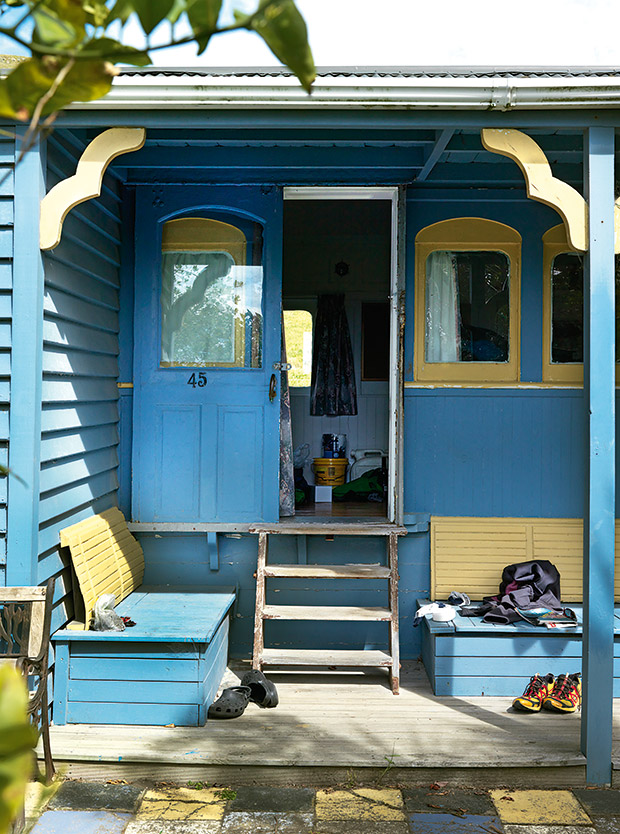
Originally published in the Jan/Feb 2015 issue of NZ Life & Leisure.
When Murray Sinclair was three years old his mother went off with £500 in her purse and came back with a key in her pocket. Not that keys were such a great commodity in those days – people left their properties unlocked most of the time – but even Nancy Sinclair could not have foretold how that small key to just about the smallest piece of real estate she had ever seen would actually open a door out of all proportion to the size of the bach she had just purchased at Taylors Mistake.
That door opened onto endless summers and stolen weekends; it shut onto balmy nights and opened again onto fresh mornings. When the sea turned rogue and the wind was a bully, it shut tight against the tide that sometimes crashed against the windows because the other thing about that door is that it is only metres from the sea. Sometimes it is even part of the sea because one of the thrills of Taylors Mistake, just over the hill from Lyttelton, is that many of the baches are perched on the Queen’s Chain, the 100 links of a surveyor’s chain that these days equals a mere 20 metres.
Above them the cliff curves like a fossilized wave, sometimes dropping unexpected rocks and debris but mostly held safe by the flowers that riot over it: more daisies than you’ve ever seen, from the little silky white ones so unfairly dismissed as weeds to purple, orange, crimson, navy-trimmed, black-eyed white, yellow, blue, pink and cerise ones.
For a couple of weeks in early spring some indeterminate yellow flowers also drip off the cliff in lazy spirals… and then they’re gone. Perhaps they are a metaphor for the tiny baches of Taylors Mistake, a reminder that living on the Queen’s Chain has the potential to be a fragile privilege. Despite its name, this collection of little baches is the best thing that could have happened to the families who holiday there.
Words: Jane Warwick Photos: Jane Ussher
8. Two boats and a cottage at Lake Rotoiti, northeast of Rotorua

Originally published in the Jan/Feb 2015 issue of NZ Life & Leisure.
She was a former London bobby who had come to New Zealand on holiday and returned for good. He was a lawyer turned accountant turned real estate broker, amid other career paths, before following his heart into the boat charter business. A friend of his said: “I know someone you should meet. She’s an English girl. Her name’s Charlotte.” Not for Richard Stevens the awkward dance of the blind date but, he says, “Something made me think: I’ve got to meet this girl”.
- Caravel makes a small sortie onto the lake, still sporting her retro-style gauges.
- Richard at the helm of Caravel. As a 12-year-old he would catch the bus from Auckland a few days ahead of his parents and go boating on his own.
- Refreshments are served on the engine box in the cockpit.
- Charlotte and Richard Stevens on the bridge of D’Urville, their classic motor yacht.
- Charlotte caters for charter guests who enjoy al fresco dining in D’Urville’s sheltered cockpit.
- A spiral staircase leads from the saloon to the main accommodation and engine room below decks.
Charlotte picks up the story. “So one day I picked up the phone at work and this voice on the other end said, ‘Hello, my name is Richard Stevens. You don’t know me from a bar of soap but I’d like to take you out for dinner. And I laughed and said that I thought he was very brave and I didn’t think that dinner would be a very good idea but perhaps we’d start with a cup of coffee.”
Three coffee meetings later Richard asked Charlotte to dinner on his classic motor yacht D’Urville. He lived on the boat at Pier 21 in downtown Auckland. To be on the safe side, Charlotte asked if she could bring some friends. “Of course,” he said. She brought six. That was in 2003.
They married in 2013. They still live on D’Urville most weekdays, with weekends spent at their cottage at Lake Rotoiti. It’s a water-based lifestyle, thanks to Richard listening carefully when in 1998 life held up a big sign in front of him.
“I decided I’d climb out of a suit and become a charter boat skipper,” he says. “It was brought about by my father, who was only 23 years older than me, getting terminal throat cancer. He was 68. When he was diagnosed I suddenly thought: ‘Right. I don’t want a suit any more. Let’s go and do something different.’ It was something that I’d wanted to do for some years but I’d convinced myself, or had been convinced, that I couldn’t do that. I was a father of young children and had pressures on me to be sensible rather than do something stupid like run a charter boat.”
- The view from Caravel’s saloon of the Stevens’ cottage on the shores of Lake Rotoiti.
- With many of the belongings and original furnishings of the previous owner still in place and its timber walls adorned with sporting equipment, the cottage feels like a small hunting lodge.
New Zealand Challenge, the 60-foot former Team New Zealand America’s Cup tender turned charter launch was for sale. Richard had always admired this stylish work-boat so a deal was done, retaining contract skippers until he obtained his own ticket, and was soon contract skippering other local vessels including international deliveries. In 2001 he bought D’Urville, an elegant 70-foot, 55-ton design by Laurent Giles, built in kauri by McMullen & Wing in Auckland and launched in 1975.
Words: Rebecca Hayter Photos: Tessa Chrisp
9. A Kiwiana-filled bach in Mangawhai
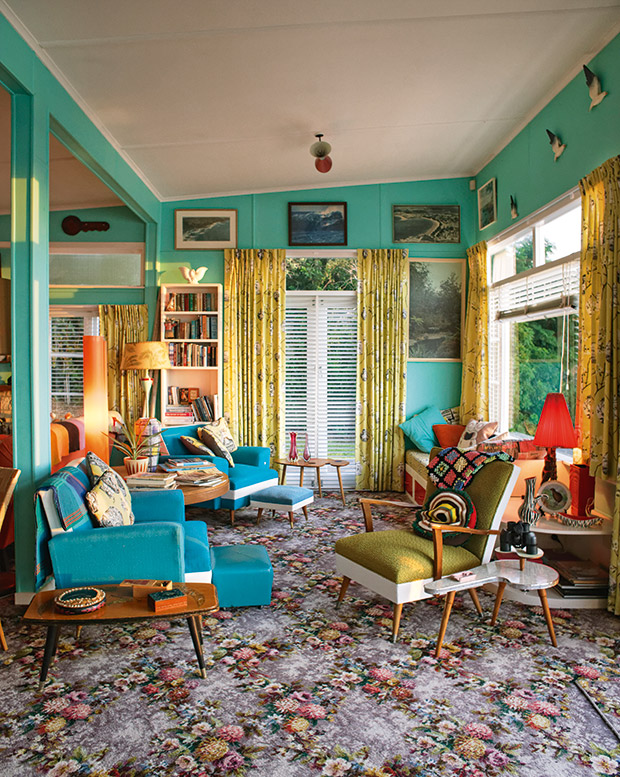
Originally published in the Jan/Feb 2020 issue of NZ Life & Leisure. Full story online here.
It’s more than a storehouse of treasured family memories, more than a good example of 1960s bach architecture. It’s a museum of its era and now it has inspired a book. The Mangawhai property so utterly charmed three generations of one family (four generations actually, if the baby in the car seat is counted) that they overlooked its distinctly estuarine beach and lack of home comforts. They took one long look at the bach, fell in love with the way it seemed to open its wings to the ocean, named it the Butterfly House, and added a 1950s wooden butterfly.
Well-known collector and philanthropist Chrissie Fernyhough, at that stage the middle generation of the bach-seeking family, is not known for falling in line with what everyone else fancies as fashionable. She wasn’t about to dismiss the Butterfly House’s interior as terrible, although the house would eventually see sympathetic additions double its size to accommodate the multiple generations still gravitating to it today, two decades later.
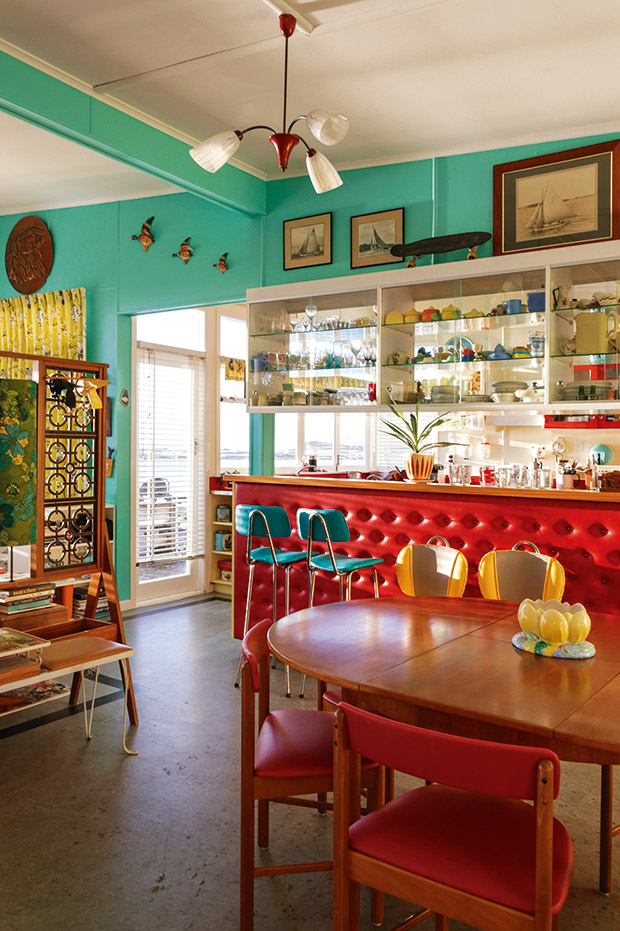
Chrissie’s avid interest in the history of New Zealand décor, homewares and her knowledge of art, quickly attuned her eye to the unique interiors of the Butterfly House era. It was an excellent example of mid-century decorating and a style the family were determined to honour. Pieces from the 1950s and 1960s, and especially everyday items, became Chrissie’s speciality. But each member of the wider family developed their own area of interest; some collecting Whites Aviation hand-coloured photographs, others the Little Golden Books series, while yet more fell prey to Crown Lynn, Tretchikoff prints and bevelled mirrors.
Words: Kate Coughlan Photos: Kate Tattersfield & La Gonda Studios
MORE HERE
Love this story? Subscribe now!
 This article first appeared in NZ Life & Leisure Magazine.
This article first appeared in NZ Life & Leisure Magazine.
